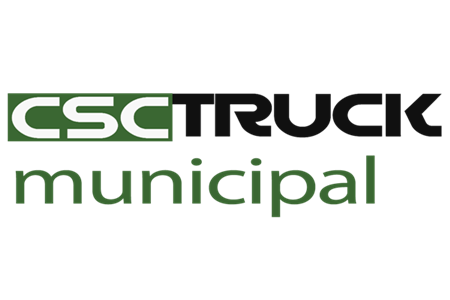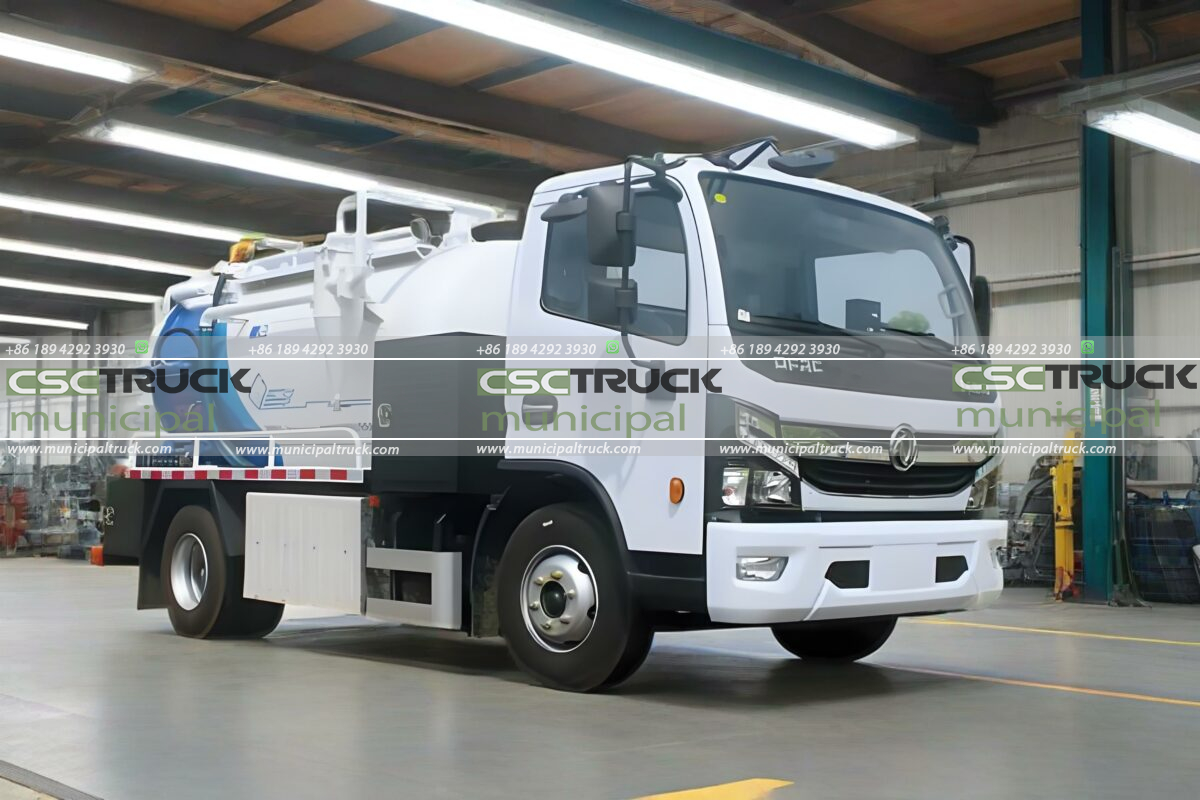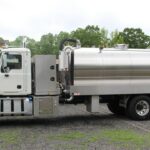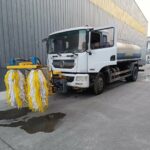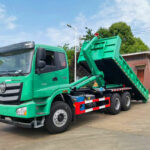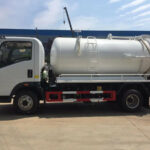Waste collection is a critical, yet often overlooked, pillar of modern sanitation. While traditional garbage trucks handle solid refuse, a different beast tackles the challenges of liquid waste, septic systems, and clogged sewers: the vacuum sewer truck. These powerful machines operate on a principle seemingly pulled from science fiction – creating a powerful vacuum to lift and transport waste materials over significant distances and elevations. But how exactly does this suction mechanism transform atmospheric pressure into a formidable cleaning force? Let’s delve into the intricate engineering that makes these essential vehicles work.
Harnessing the Power of Negative Pressure – The Core Principle
At the heart of every vacuum sewer truck lies a fundamental principle of physics: atmospheric pressure. We live submerged in an ocean of air, and this air exerts a constant force on every surface – approximately 14.7 pounds per square inch (psi) at sea level. Vacuum sewer trucks ingeniously manipulate this constant force to perform their dirty work. The core mechanism revolves around creating a significant negative pressure gradient within a sealed system. This is achieved by a high-capacity, positive-displacement vacuum pump, the undisputed powerhouse of the vehicle. When this pump operates, it aggressively evacuates air from the truck’s primary waste storage tank. As air is forcibly removed, the air pressure inside the tank plummets far below the ambient atmospheric pressure outside. This dramatic pressure difference is the engine of the suction process. Nature, seeking equilibrium, forces the higher-pressure air (and anything it can carry) outside the system to rush towards the zone of lower pressure inside the tank. By strategically placing a suction hose into the material needing removal – be it sludge, liquid waste, or debris – this powerful inrush of air sweeps the waste material along with it, conveying it forcefully up the hose and into the waiting tank. The efficiency of this entire system hinges critically on maintaining an airtight seal throughout the waste stream path – from the point of suction entry, through the hose, and into the sealed tank – ensuring the pressure differential remains potent and effective.
Anatomy of the Vacuum System – Key Components in Concert
Transforming the principle of negative pressure into a practical waste collection machine requires a symphony of specialized components working in perfect harmony:
- The Vacuum Pump: This is the literal heart of the system. Typically, a positive displacement pump, like a rotary vane or liquid ring pump, is used. These pumps work by trapping a volume of air in a chamber, reducing the chamber’s volume (thus compressing the air), and then expelling it. The continuous repetition of this intake-compression-exhaust cycle systematically removes air molecules from the storage tank, generating the essential vacuum. Pump capacity, measured in Cubic Feet per Minute (CFM) or Cubic Meters per Hour (m³/h), directly determines the volume of air that can be evacuated per minute, influencing the speed and strength of the suction force generated. Equally crucial is the ultimate vacuum level the pump can achieve, measured in inches or millimeters of Mercury (Hg), which dictates the maximum pressure differential possible.
- The Waste Storage Tank: Constructed from heavy-duty, corrosion-resistant steel (often stainless or coated carbon steel), this cylindrical tank is engineered to withstand significant negative pressure internally and the substantial weight of the collected waste. Its design includes reinforced ribs for structural integrity. Crucially, the tank must be hermetically sealed when under vacuum. This is ensured by large, robust tank cover seals and specialized ball valves or butterfly valves at the suction inlet and discharge points. The tank’s interior is often coated with protective linings to resist abrasion and chemical corrosion from the diverse waste streams encountered.
- The Suction Hose and Accessories: This is the lifeline connecting the vacuum source to the waste material. Constructed from flexible yet durable materials like reinforced rubber or specialized polymers, the hose must resist collapse under vacuum, abrasion, and chemical attack. Hose diameter (commonly 3 to 6 inches) impacts flow capacity, while hose length (often 50-100+ feet) determines operational reach. The end of the hose features specialized suction tools or nozzles designed for specific tasks – from wide-mouthed sludge suckers to flexible sewer cleaning nozzles that can navigate pipe bends. A critical component at the tank inlet is the primary separator (often a cyclonic separator), which uses centrifugal force to remove the bulk of solid debris from the airstream before it enters the main tank, protecting the pump from damage and reducing tank clogging.
- The Control System: Modern vacuum trucks feature sophisticated control panels allowing the operator to precisely manage the vacuum pump, tank valves, and sometimes auxiliary systems like tanker jetting. Pressure gauges continuously monitor the vacuum level inside the tank, providing vital feedback on system performance and tank fullness. Safety interlocks prevent unsafe operations, such as opening the tank cover while under vacuum.

The Workflow – From Suction to Discharge
Understanding the sequence of operation clarifies how these components interact dynamically during a typical waste collection job:
- System Priming: The operator positions the truck and deploys the suction hose with the appropriate tool inserted into the waste source (e.g., septic tank cleanout, sewer manhole, spill containment area). All valves on the tank are securely closed.
- Vacuum Generation: The vacuum pump is engaged. It begins aggressively evacuating air from the sealed waste storage tank. As air is removed, the pressure inside the tank rapidly decreases.
- Suction Initiation: The significant pressure differential between the atmosphere (pushing down on the waste source) and the low-pressure zone inside the tank forces air to rush towards the tank. This rushing air stream flows up the suction hose, entraining the liquid waste, sludge, or debris in its path. The waste material is carried along by the high-velocity air flow.
- Separation and Storage: The waste-laden airstream enters the tank inlet. Here, the primary separator (cyclone) spins the mixture, flinging heavier solids and liquids against the tank wall. These materials drain down into the main tank body. The partially cleaned air continues towards the vacuum pump.
- Filtration and Pump Protection: Before reaching the delicate vacuum pump, the air passes through a secondary filtration system, typically a series of baffles, moisture traps, and finally, a high-efficiency air filter (often an oil bath filter or coalescing filter). This removes fine mist, aerosols, and any remaining particulate matter, protecting the pump from wear, corrosion, and moisture damage, and preventing the release of contaminants or odors to the atmosphere via the pump exhaust.
- Tank Loading: Steps 3-5 continue until the waste storage tank reaches its safe capacity, indicated by a rise in the tank’s internal pressure (as the airspace diminishes) or by visual indicators/sensors.
- System Shutdown and Transport: The vacuum pump is shut down. Air may be slowly bled back into the tank to equalize pressure before opening any valves. The suction hose is retracted and secured. The truck transports the collected waste to an approved disposal or treatment facility.
- Discharge: At the disposal site, the tank’s discharge valve is opened, often aided by the truck’s positive pressure system (using the vacuum pump in reverse or a dedicated blower) or simply by gravity, to empty the tank contents.
Engineering for Efficiency and Environmental Protection
Modern vacuum sewer trucks are feats of engineering designed not just for power, but also for efficiency, safety, and minimizing environmental impact:
- Advanced Pump Technologies: Liquid ring vacuum pumps are prevalent due to their tolerance for moisture and small amounts of solids that might bypass filtration. They use a sealing liquid (often water or oil) to create compression. Rotary vane pumps offer high vacuum levels and are often oil-lubricated for durability. Innovations focus on improving energy efficiency, reducing noise levels, and enhancing durability.
- Enhanced Filtration Systems: Multi-stage filtration is critical. Cyclonic separators handle the bulk separation. Coalescing filters remove fine oil and water mists. High-efficiency particulate air (HEPA) filters or activated carbon filters may be added for specific hazardous material applications or stringent odor control, ensuring clean air exhaust.
- Tank Design Innovations: Internal tank baffles reduce sloshing during transport, improving vehicle stability and safety. Sight glasses and ultrasonic level sensors provide accurate fill-level monitoring. Tank linings (polyurethane, epoxy) are continually improved for longer life against corrosive and abrasive wastes.
- Odor and Emission Control: Beyond filtration, vapor recovery systems or carbon canisters can be integrated to capture volatile organic compounds (VOCs) during loading or venting, significantly reducing nuisance odors and air pollution.
- Operator Safety Features: Ergonomic controls, remote operation capabilities for hazardous situations, tank pressure relief valves, and robust safety interlocks protect operators from the inherent dangers of high-pressure differentials and exposure to hazardous materials.
The Indispensable Role in Modern Waste Management
The suction mechanism, powered by an engineered vacuum, is what grants vacuum sewer trucks their unique and indispensable capabilities. They excel where gravity or mechanical conveyance fails: lifting liquids and sludge vertically from deep sumps or septic tanks, transporting waste horizontally over long distances (hundreds of feet) from the collection point to the truck, efficiently handling a wide range of materials – from raw sewage and industrial sludges to contaminated water and settled solids – and accessing confined or difficult spaces through flexible hoses. This makes them the go-to solution for municipal sewer system maintenance (cleaning lift stations, clearing blockages), septic tank pumping and cleaning, industrial waste handling (tank cleanouts, spill response), and port sanitation (bilge and holding tank waste removal).
Their ability to perform these tasks efficiently and with a high degree of containment minimizes environmental contamination risks and protects public health. While distinct in function from refuse collection garbage trucks or roll-off sewer trucks designed for transporting large containers of solid debris, vacuum sewer trucks are a critical component of the integrated fleet required to maintain clean, functional, and healthy urban and rural environments. Their silent, invisible force – the power of a vacuum – works relentlessly behind the scenes, ensuring the smooth and sanitary removal of the waste we cannot see.
